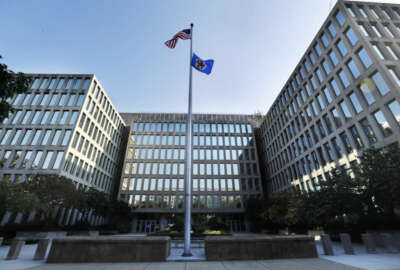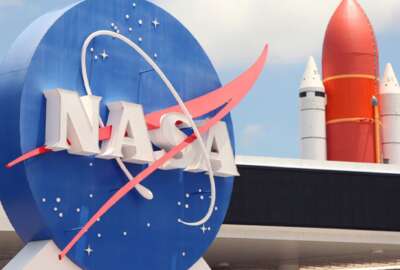NIH doctor inspired to pursue sickle cell disease cure
Personal experiences inspire Griffin P. Rodgers to become a doctor and develop lifesaving treatments.
Listen to the Dr. Griffin Rodgers’ interview on Federal Drive with Tom Temin.
Dr. Griffin P. Rodgers’ interest in developing an effective treatment for sickle cell disease grew out of his personal experience of knowing people impacted by the malady.
“When I was in high school and college, I had three close friends pass away from sickle cell disease. Their pain and their deaths at such a young age made an impression on me and influenced me to learn more about sickle cell, just as my mother’s career as a public health nurse inspired me to pursue medicine,” Rodgers told Federal News Radio in an exclusive Q&A (See below).
In the 1990s, Rodgers, who’s now the director of the National Institute of Diabetes and Digestive and Kidney Diseases at the National Institutes of Health, developed the first effective drug treatment for the disease.
More recently, he came up with a modified blood stem cell transplant regimen that cured 26 out of 30 adult patients in a clinical trial.
Rodgers’ work has been called “huge” and “revolutionary” by his medical colleagues.
For his lifesaving research into the treatment of sickle cell disease, the Partnership for Public Service recently named Rodgers one of the finalists for the 2015 Science and Environment Medal. The award recognizes federal employees who have made important contributions in the area of science and environment. This includes biomedicine, economics, energy, information technology, meteorology, resource conservation and space.
Getting to know Dr. Griffin P. Rodgers
Federal News Radio asked each of the Sammies finalists five questions about themselves. Here are Rodgers’ responses:
What three words best describe your leadership philosophy?
Listen, include, serve. At NIH, we do our best work when we work together, respecting all of our voices, talents and tasks, to do our part in helping all people to live healthier, happier lives.
What’s the best piece of advice (or words of wisdom) you’ve ever received and who gave it to you?
Well, of course, he didn’t say this directly to me, but the Chinese philosopher Lao-tsu’s quote on leadership has been a guiding light: “To lead people, walk beside them. … As for the best leaders, the people do not notice their existence. … When the best leader’s work is done, the people say ‘We did it ourselves!’” I think that sums it up for me — a leader should ensure that everyone feels a sense of ownership over their responsibilities and over the mission of NIH.
Who is your greatest role model and why?
My mother was my earliest and greatest role model. She was a public health nurse, and she first exposed me to the practice and potential of medicine. She would take care of people, many of whom were uninsured, in community clinics. Many of her patients weren’t able to get to the clinic during the work week. So she would visit them at their homes on weekends and often took me with her. From her, I learned so much about using practical approaches to solve medical problems. She taught me my first lessons in the human, compassionate side of practicing medicine, and the human toll of chronic health problems and health disparities. My mother was a caregiver, a healer, a listener and a scientist all rolled into one.
What’s the last thing you read and what’s next on your reading list?
I just re-read “The Immortal Life of Henrietta Lacks” by Rebecca Skloot. Now I’m reading “Thinking, Fast and Slow” by Daniel Kahneman.
Who would you most like to have lunch with and why?
When I was in high school and college, I had three close friends pass away from sickle cell disease. Their pain and their deaths at such a young age made an impression on me and influenced me to learn more about sickle cell, just as my mother’s career as a public health nurse inspired me to pursue medicine. Lunch with them would be bittersweet — to see their faces and be reminded of their loss, but also to tell them that their lives inspired me to find ways to improve the lives of other people with sickle cell disease. And I hope I have. People with sickle cell can live longer and better lives now, and I hope my friends would feel proud that they helped make that happen.
The Science and Environment Medal is just one of the Samuel J. Heyman Service to America Medals (Sammies) presented annually by the Partnership for Public Service. View a photo gallery of all the Sammies nominees.
Copyright © 2024 Federal News Network. All rights reserved. This website is not intended for users located within the European Economic Area.
Michael O’Connell is senior digital editor of Federal News Network optimizing content for the best user experience. Follow @moconnellWFED
Follow @moconnellWFED






